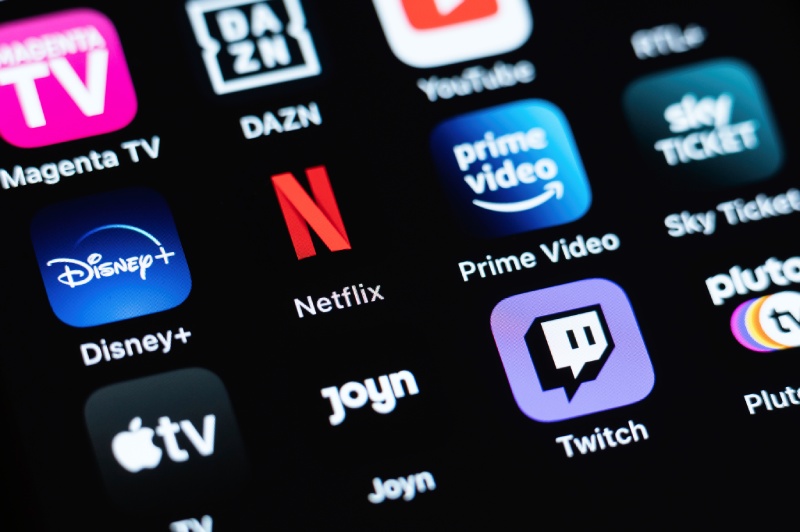Business
Become Overwhelmed with Subscriptions? These are 8 Money-Saving Tips

The purpose of subscriptions is to make things convenient. You let the nice companies deduct money from your account automatically rather than paying for each TV show you stream or manually writing a check to the gym each month. Sentimental, huh?
There’s a dark side to our subscription-based economy. Individuals are paying for services they do not require or use, and they find it difficult to discontinue their subscriptions when they wish to.
Many subscriptions have recurring fees and terms, particularly streaming services, which are one of the most popular subscriptions. Amazon began displaying advertisements to current Prime Video customers in January unless they paid extra to be removed. To boost the proportion of paying subscribers, Netflix last year cracked down on password sharing. Disney, the company that owns ESPN Plus, Hulu, and Disney Plus, has now modified its terms to forbid sharing and will attempt to get those users to pay this summer.
Make sure you’re still paying the same amounts for your subscriptions on a regular basis and only for items you use and adore, like newspapers, to safeguard your finances.
- Use app stores to find your hidden subscriptions
You are likely paying monthly fees for services you have long since forgotten to sign up for. A free trial is easier to forget about the longer it is — for example, three months of Apple TV Plus with a new device.
To find out which businesses are charging you, you can review your credit card statement, but that doesn’t provide all the information. While the majority of recurring payments are made automatically each month or all at once a year, an increasing number of services—like those from Amazon, Apple, and Google—bill through third parties. They are simpler to overlook on statements because they can be combined into a single charge.
Check what you have signed up for, including any free trials you may have forgotten are about to expire, by going to your settings in each app store.
You can see what you are paying for through Apple by going to Settings on an iOS device, tapping on your profile at the top, and then tapping “Subscriptions.” Ensure that “Renewal Receipts” is enabled so that you receive emails reminding you that these services are paid for. To find “subscriptions,” navigate to the Play Store on an Android device, tap the menu icon (the box with lines in the upper-left corner), and then Additionally, on the Amazon website, select “memberships and subscriptions” from the drop-down menu next to the search bar.
- Unsubscribe. Never accept a no from someone
Cancellation outside of app store subscriptions can be complicated. While each company is unique, you can find the online unsubscribe options by simply searching for its name and selecting “cancel account.”
If you are able, delete all credit card information from your account to make sure you aren’t duped into another billing cycle. Up until the next payment date, you ought to be able to use the service. Call a customer service agent if you need assistance; avoid letting sales pitches get in the way. Report it right away to your credit card company if you are being charged for a dubious subscription that you don’t remember and can’t locate the contact information for.
Keep in mind that uninstalling an app won’t stop you from making payments if you use it for a subscription service like Netflix. It has to be done by hand.
Go to your account page and choose the drop-down menu under “Membership” if you are specifically trying to cancel your membership with Amazon. You can choose to “End membership” by clicking the button, or you can receive a heads-up before it renews. Click “Continue to cancel” after scrolling to the bottom of the page.
- Make sure to document everything and set reminders
Track every subscription to prevent future surprises with unwelcome payments. When you’re done with a subscription or free trial, set a calendar reminder to cancel it (set it for at least 48 hours before you will be charged). You should also periodically check your bank statements and maintain a list or spreadsheet of all your subscriptions as you start them. Recurring payment finder tools are included in certain banking and budgeting apps.
- Calculate whether a subscription is still worthwhile
A lot of subscriptions are only worthwhile if you use a service to a certain degree, particularly when there are other options for making payments. For instance, you can order goods from Amazon without a Prime membership, and many of them arrive quickly even without one. (Take this quiz to determine whether you’re receiving enough value from your Amazon Prime membership.)
If you pay for Uber One, the company’s $9.99/month subscription option, review your past year’s worth of orders and trips to determine whether the discount is still more advantageous than paying for each item individually. Grubhub Plus memberships are no different.
Verify that you are only paying for the appropriate subscription tier for each company, not more. For instance, now that Netflix has clamped down on sharing, make sure you’re only paying the bare minimum if you use the service.
- Share, negotiate, or take a break from accounts
If you want to cut costs on subscriptions, you have more options than just keeping or canceling them.
It may surprise you to learn that many payments are negotiable. For example, phone and cable service fees can typically be reduced with a call and a threat to move to a different provider. Interest rates on credit cards and auto insurance can also be negotiated. When your initial contract expires is the ideal time to negotiate.
Sharing your subscriptions, of course, properly and legally, is another way to cut costs. Examine any family plans that the company offers, and review the fine print to see how it defines “family” or “household”—terms that are subject to change. Is your mother simply your mother, or does she also need to live at the same address to share a streaming account? It might be worthwhile to switch if adding more users to a streaming account reduces the cost for everyone.
Certain businesses, like Spotify, let you add up to five more family members for an additional fee, or you can get a two-person account for just $4 more. Additionally, many subscriptions offer lower prices if you pay for the full year upfront, especially if you plan to use it for an extended period. (Mark that date on your calendar to remind you in 11 months!)
Some businesses allow you to pause an account rather than cancel it if you’re not sure you want to give up your account permanently. Additionally, you can pause and resume using services like Netflix without losing your viewing history. Additionally, you have the option to cycle through similar accounts, using one streaming service for a month before stopping and using another.
- Compare prices using delivery apps
You have a lot of options when it comes to paying someone to bring you a fresh or frozen burrito because grocery and restaurant delivery services are abundant. Prices can differ between apps, even for the same grocery store or restaurant.
Check out our analysis of where your money goes with each service to see which apps are best for local restaurants and your bank account.
Consider comparing prices and factoring in delivery costs before heading to the grocery store by using apps like Instacart or Amazon Fresh. Check the stores’ websites directly to see if they provide pickup or delivery services. Prices for restaurants can also differ amongst apps, so before making a purchase, open a few and choose your favorite dishes.
Check if the restaurant is accepting orders directly, if at all possible. When using a non-Grubhub app, the business will likely be able to keep a larger portion of your payment, even if the prices aren’t lower. A delivery fee is essentially being paid in advance by some businesses that offer subscription services, like DoorDash. Don’t bother if you can’t order enough with just one app to justify the cost.
- Reduce the cost of your cloud storage expenses
You eventually used up all of your free Google or iCloud storage. Alternatively, perhaps you overpaid for more space than you required when you signed up for several services. This is a two-step financial tool that may also simplify the location of all your vital records and images.
Determine the amount of storage you require first. Examine the storage on Dropbox, Apple, Google, Amazon, and Microsoft (personal files, not enterprise-level storage). Every one of them offers simple ways to view a breakdown of the types of files and the amount of storage you are using. One of the largest collections of cloud storage is typically a picture or video library. Some unexpected space eaters, like an automatic backup of all your text messages with picture attachments, may surprise you. Instead of using the cloud, try backing up to a computer, removing old message attachments, and erasing previous backups.
After making any necessary prunings, compare prices for the amount of storage you’re using and reasonable upgrade options for future growth. Theoretically, you could distribute your files for free among a few services, but that could eventually cause heartache and forgetfulness. For certain people, the best cloud storage choice is the one connected to their phone.
- Look for the free alternatives
Think about substituting some free entertainment for some paid options. With your library card, you can access free online streaming services, e-books, and more.
-

 Sports4 weeks ago
Sports4 weeks agoFIFA Club World Cup 2025: Complete List of Qualified Teams and Groups
-

 Sports2 weeks ago
Sports2 weeks agoAl Ahly vs Inter Miami, 2025 FIFA Club World Cup – Preview, Prediction, Predicted Lineups and How to Watch
-
Health1 week ago
Back to Roots: Ayurveda Offers Natural Cure for Common Hair Woes
-
World4 weeks ago
Omar Benjelloun: Strategic Architect Behind Major Financial Deals in the MENA Region
-

 Sports3 weeks ago
Sports3 weeks agoFIVB Men’s Volleyball Nations League 2025: Full Schedule, Fixtures, Format, Teams, Pools and How to Watch
-

 Tech1 week ago
Tech1 week agoFrom Soil to Silicon: The Rise of Agriculture AI and Drone Innovations in 2025
-

 Startup2 weeks ago
Startup2 weeks agoHow Instagram Is Driving Global Social Media Marketing Trends
-

 Science4 weeks ago
Science4 weeks agoEverything You Need to Know about Skywatching in June 2025: Full Moon, New Moon, Arietid Meteors, and Planetary Marvels













